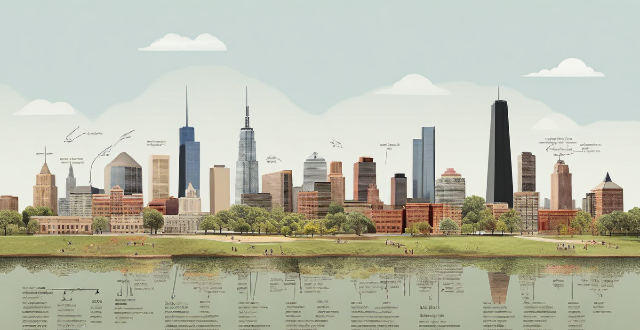The preservation and maintenance of landmarks throughout history have been influenced by various factors, including community involvement, imperial decrees, religious practices, secular power, legal protection, professional conservation, technological advances, and social change. Early efforts involved oral traditions and religious laws, while later periods saw the establishment of national trusts and the development of conservation science. Modern approaches include digital recording, monitoring systems, and adaptive management strategies in response to climate change. Future challenges will require inclusivity, public engagement, and sustainable practices.

Preservation and Maintenance of Landmarks throughout History
Landmarks are physical structures, natural or man-made, that have historical, cultural, or architectural significance. They serve as a tangible connection to the past, providing insight into the lives and experiences of those who came before us. Throughout history, landmarks have been preserved and maintained through various means, often reflecting the values and priorities of the societies that care for them. Here's a detailed look at how landmarks have been preserved and maintained over time:
Early Efforts
Community Involvement
- Oral Traditions: Before written records, stories and legends about landmarks were passed down through generations, ensuring their significance was not forgotten.
- Religious Practices: Many ancient monuments and sites were considered sacred and were thus protected by religious customs and laws.
Imperial Decrees
- Roman Empire: The Romans issued decrees protecting certain buildings and public spaces, setting an early precedent for legal protection of landmarks.
- Chinese Dynasties: Imperial edicts in China often included provisions for the maintenance and restoration of important cultural sites.
Middle Ages to Renaissance
Church Patronage
- Monastic Orders: Monasteries frequently took on the task of maintaining religious and historic sites, using them as centers for education and worship.
- Bishops and Clergy: Church officials sometimes had the authority to protect and maintain significant religious landmarks.
Secular Power
- Medieval Lords: Castles and other fortifications were maintained by their lords as symbols of power and defense.
- Renaissance Patrons: Wealthy patrons of the arts, such as the Medici family in Florence, funded restorations and enhancements to notable structures.
Modern Era
Legal Protection
- Antiquities Acts: Laws like the British Antiquities Act of 1882 provided legal frameworks to protect historic sites from looting and destruction.
- National Trusts: Organizations like the National Trust in the UK were founded to preserve and maintain historic places for public enjoyment.
Professional Conservation
- Conservation Science: The development of conservation science in the 20th century led to more sophisticated methods of preserving materials and structures.
- International Cooperation: UNESCO's World Heritage program promotes international cooperation in preserving culturally significant sites.
Community Initiatives
- Volunteer Groups: Local communities often form volunteer groups dedicated to the upkeep and interpretation of local landmarks.
- Educational Programs: Schools and universities run programs that engage students in the study and preservation of historic sites.
Technological Advances
- Digital Recording: Technologies like 3D scanning and digital modeling allow for detailed documentation of landmarks, aiding in restoration efforts.
- Monitoring Systems: Advanced monitoring systems can detect changes in environmental conditions that might threaten a site's integrity.
Future Challenges and Opportunities
Climate Change
- Adaptive Management: As climate change poses new threats to landmarks, adaptive management strategies will be necessary to mitigate risks.
- Sustainable Practices: Incorporating sustainable practices into conservation efforts will become increasingly important.
Social Change
- Inclusivity: There is a growing recognition of the need to include diverse perspectives in the interpretation and preservation of landmarks.
- Public Engagement: Engaging the public in preservation efforts through social media, educational programs, and participatory activities will be crucial for future success.
In conclusion, the preservation and maintenance of landmarks have evolved significantly over time, influenced by social, cultural, technological, and legal factors. As we look to the future, these efforts will continue to adapt to new challenges while drawing on the wisdom gained from past experiences.